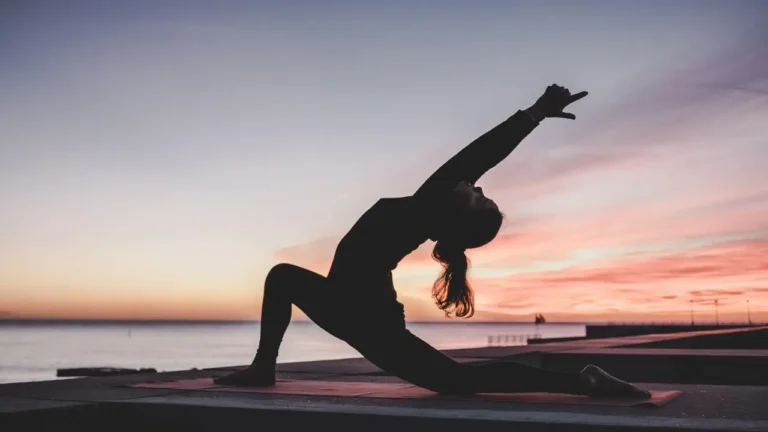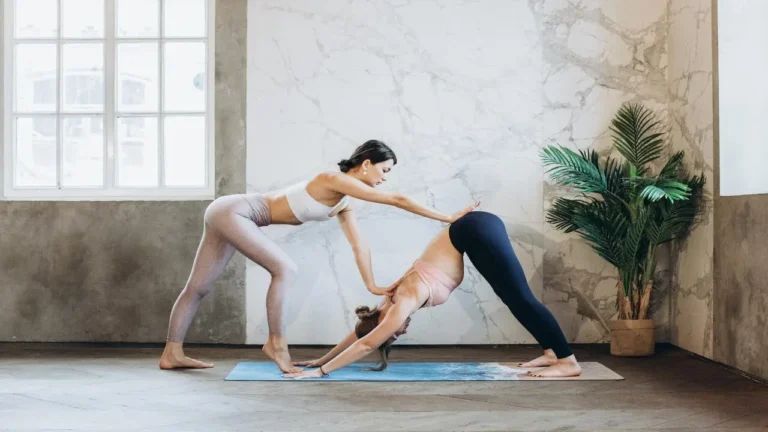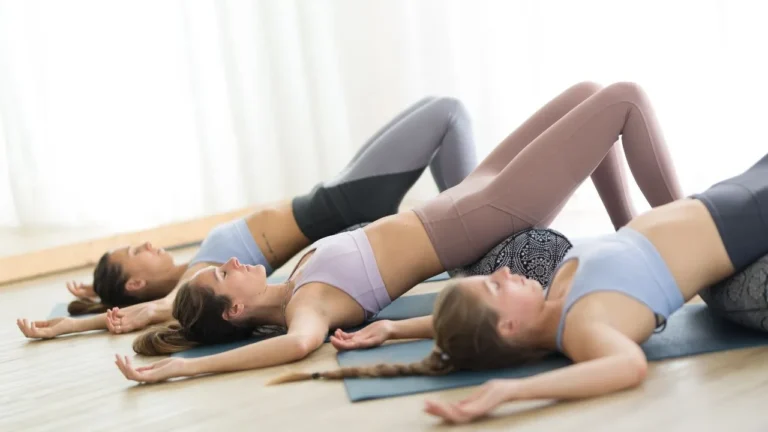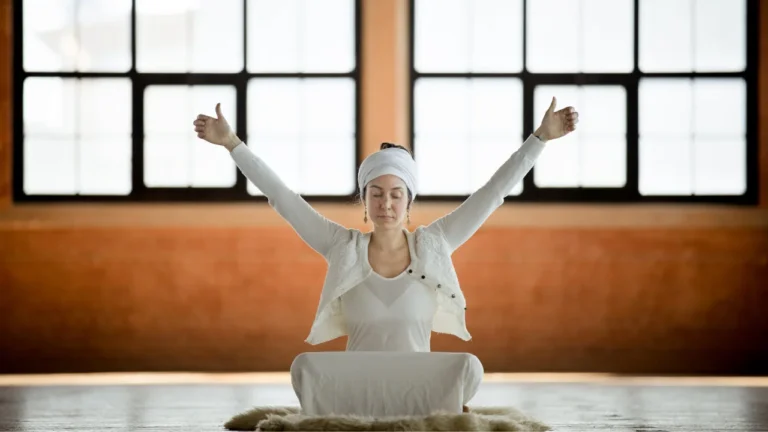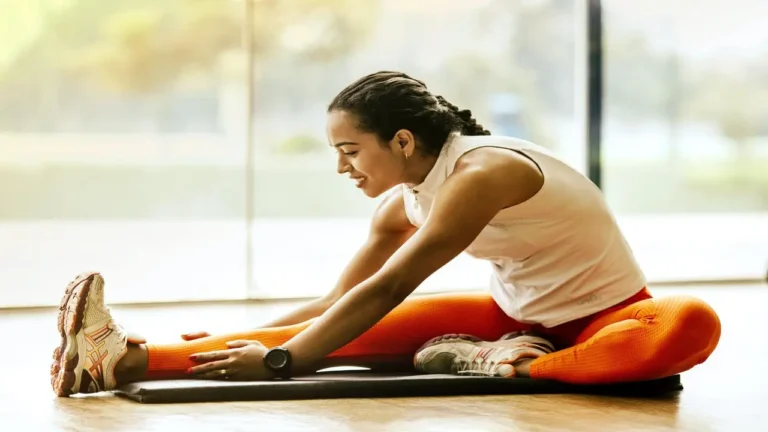Unlock Tranquility: Transform Your Life with Iyengar Yoga!

I still vividly recall the day I wandered into an Iyengar Yoga studio. I sought relief from the nagging lower back pain that had plagued me for years.
The room was filled with an assortment of props, blocks, straps, and bolsters, that seemed foreign yet inviting. As someone who had dabbled in traditional yoga, I was curious about how this practice differed.
Could Iyengar Yoga be the key to not just alleviating my chronic pain but also improving my overall well-being?
Little did I know, this encounter would mark the beginning of a transformative journey. A journey that would not only strengthen my body but also bring emotional balance and mental clarity.
It made me ponder: What is it about Iyengar Yoga that makes it so unique? How does it manage to be both methodical and deeply personal?
What is Iyengar Yoga?
Iyengar Yoga method explained: Founded by B.K.S. Iyengar, this form of Hatha yoga emphasizes precise alignment and mindful breathing to harmonize the body and mind. Unlike traditional yoga styles, Iyengar Yoga integrates deep anatomical knowledge. It uses a therapeutic approach that makes it accessible to practitioners of all levels.
Iyengar Yoga vs Traditional Yoga Differences: Traditional yoga often focuses on flowing sequences. Iyengar Yoga is distinctive for its meticulous attention to detail. Poses are held longer.
This allows for a deeper exploration of the asana. It also fosters a meditative state known as “meditation in action.”
Key Features of Iyengar Yoga

Precision and Alignment: Building a Strong Foundation
One of the hallmarks of Iyengar Yoga is its meticulous focus on alignment. Our instructor would say, “Alignment isn’t just about the body; it’s about uniting the body, mind, and spirit.”
How Iyengar Yoga Improves Posture
By paying close attention to how each part of the body aligns in a pose, I noticed my posture improving. Standing taller, I felt more confident and aware of my movements throughout the day.
Iyengar Yoga Poses for Core Strength
We practiced poses like Plank and Boat Pose, which strengthened my core muscles. This not only supported my back but also enhanced my balance and stability.
Unique Features of Iyengar Yoga
Is Iyengar Yoga for You?
If you’re seeking a yoga practice that emphasizes alignment, Iyengar might be for you. It uses props to help you achieve correct alignment and practice safely. Iyengar classes are suitable for beginners as well as advanced yogis who want to deepen their practice.
Iyengar yoga teachers undergo rigorous training. They complete an in-depth three-year certification process. This ensures they have the knowledge and skills to teach this style of yoga.
The focus on anatomy and alignment in Iyengar yoga can be particularly beneficial for those with postural issues or injuries.

Training, certification, and standards
To become a certified Iyengar teacher, one must undergo a rigorous training program. This program includes an in-depth study of the yoga sutras, anatomy, and alignment principles.
Iyengar yoga teachers must complete a three-year certification process and adhere to standards set by Iyengar Associations around the world.
Certification is awarded after a teacher has demonstrated proficiency in teaching Iyengar yoga. The teacher must also receive personal supervision from the Iyengars in Pune.
Teaching Iyengar yoga
Teaching Iyengar yoga requires extensive knowledge of alignment principles and anatomy. Incorporating various props into the teaching methodology can aid students in achieving proper alignment and practicing safely.
Iyengar yoga teachers must undergo rigorous training. They need ongoing education to maintain their certification. This ensures they provide their students with high-quality instruction.
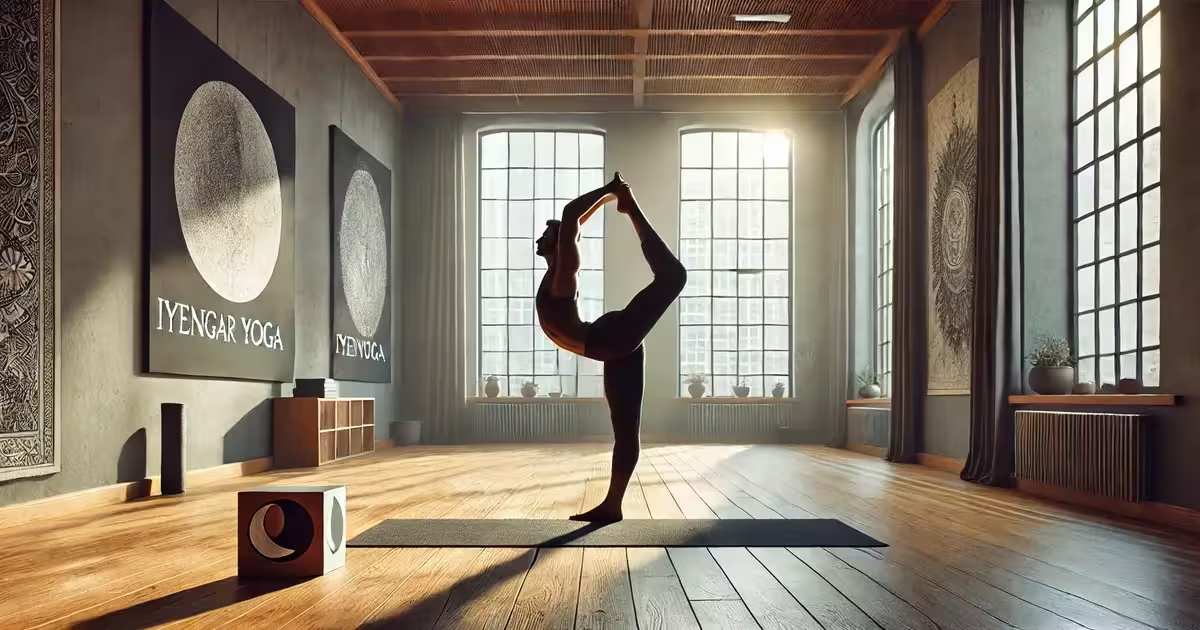
How to Practice Iyengar Yoga for Beginners
To practice Iyengar, find an Iyengar yoga class or teacher in your area. The practice often includes a sequence of poses designed to build strength.
It also improves flexibility and balance. There is a focus on correct alignment and the use of props to support the body. Breathing techniques and meditation may also be included in the practice.
Props such as straps bolsters, and blankets are often used to help students achieve correct alignment and deepen their practice.
Beginners should start with a beginner-level Iyengar class. They can work their way up to more advanced classes as they develop their practice.
Iyengar Yoga Poses
Iyengar yoga is renowned for its emphasis on alignment and precision. It also uses props to aid practitioners in achieving the correct form. Here’s a detailed look at some of the key poses in Iyengar yoga.
These poses are designed to build a strong foundation for beginners. They also provide benefits for experienced yogis alike.
1. Trikonasana (Triangle Pose)
Trikonasana is a foundational pose in Iyengar yoga, focusing on alignment and balance. Start by standing with your feet wide apart. Turn your right foot outward and your left foot slightly inward.
Extend your right hand down to your shin or a block, and reach your left arm towards the ceiling. This pose helps stretch and strengthen the legs, opens the hips, and improves balance.
2. Virabhadrasana II (Warrior II Pose)
In Virabhadrasana II, stand with your feet wide apart, turn your right foot out and your left foot slightly in.
Bend your right knee over your ankle, extend your arms parallel to the floor, and gaze over your right hand. This pose builds strength in the legs and core, improves stamina, and enhances concentration.
3. Ardha Chandrasana (Half Moon Pose)
This balancing pose requires focus and strength. Stand on your right leg. Lift your left leg parallel to the floor. Place your right hand on a block for support. Extend your left arm towards the ceiling.
Ardha Chandrasana improves balance, strengthens the legs and core, and enhances mental focus.
4. Uttanasana (Standing Forward Bend)
Uttanasana is a calming pose that stretches the hamstrings and back. Stand with your feet hip-width apart and fold forward from your hips, keeping your spine long.
Place your hands on the floor or blocks. This pose helps relieve stress, reduces fatigue, and improves flexibility.
5. Setu Bandha Sarvangasana (Bridge Pose)
Lie on your back with your knees bent and feet hip-width apart. Lift your hips towards the ceiling, using a block under your lower back for support.
This pose strengthens the back, glutes, and hamstrings, and opens the chest and shoulders, promoting relaxation and reducing stress.
6. Sirsasana (Headstand)
Known as the king of yoga poses, Sirsasana requires strength and concentration. Begin in a kneeling position, interlace your fingers, and place your forearms on the floor, creating a stable base.
Slowly lift your legs overhead. This inversion improves circulation, strengthens the upper body, and enhances mental clarity.
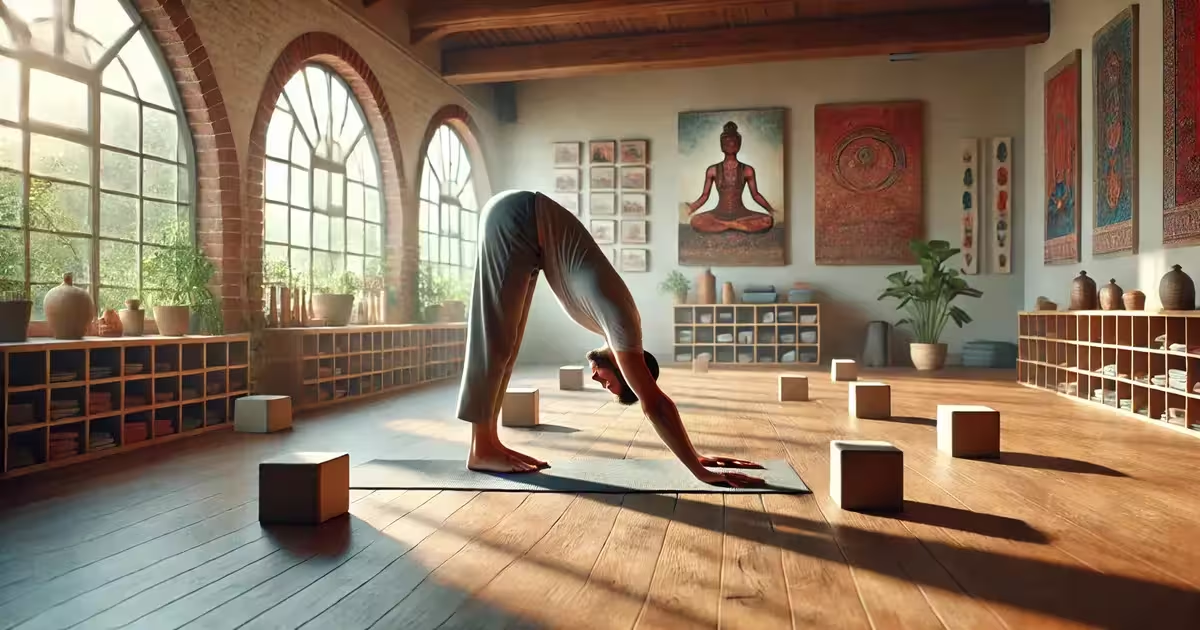
Alignment and Props
Alignment is a key aspect of Iyengar’s practice. Teachers place a strong emphasis on correct alignment to ensure students practice safely and avoid injury. Props are often used to help students achieve correct alignment and deepen their practice.
For example, a strap can extend the reach of the arms in certain poses. A bolster supports the back or hips. A blanket cushions the knees.
The use of props allows students to access the benefits of a pose. It does so without compromising their alignment. It also prevents putting strain on their bodies.
Subscribe to Create Higher Vibrations!
Get Inspiration and Practical advice straight to your inbox.
Benefits of Iyengar Yoga
Practicing yoga has many benefits for both the body and mind. The focus on alignment and the use of props can help to alleviate postural and structural problems. It helps release emotional tension. It also increases focus and concentration.
Yoga can improve physical health and enhance psychological well-being. It boosts energy levels. Additionally, it fosters a deeper connection between the body and mind.
Final Thoughts
Iyengar Yoga has transformed my life in ways I couldn’t have imagined. From alleviating physical pain to fostering emotional balance, the practice offers profound benefits. It’s accessible to everyone, thanks to its use of props and focus on individual needs.
Whether you’re looking to improve your posture, build core strength, or find inner peace, Iyengar Yoga provides a path. It’s not just about the poses; it’s about embracing a holistic approach to health and well-being.
So why not give it a try? Your journey could begin with a single pose. It might start with a single breath. This can lead to a lifelong practice that nurtures your body, mind, and spirit.


